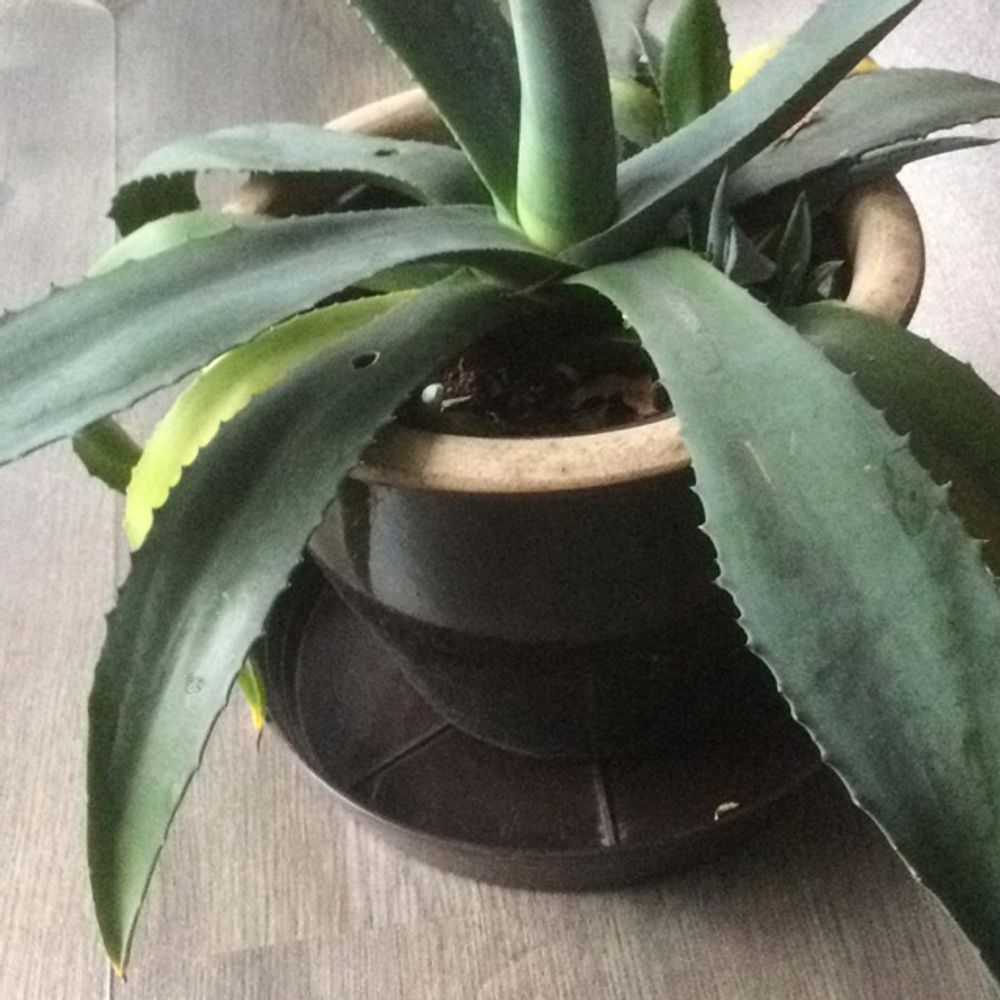Blue agave
(Agave tequilana)

Description
Agave tequilana, commonly called blue agave (agave azul) or tequila agave, is an agave plant that is an important economic product of Jalisco, Mexico, due to its role as the base ingredient of tequila, a popular distilled beverage. The high production of sugars, mostly fructose, in the core of the plant is the main characteristic that makes it suitable for the preparation of alcoholic beverages. The tequila agave is native to the states of Jalisco, Colima, Nayarit and Aguascalientes in Mexico. The plant favors altitudes of more than 1,500 metres (5,000 ft) and grows in rich and sandy soils. Blue agave plants grow into large succulents, with spiky fleshy leaves, that can reach over 2 metres (7 ft) in height. Blue agaves sprout a stalk (quiote) when about five years old that can grow an additional 5 metres (16 ft); they are topped with yellow flowers. The stalk is cut off from commercial plants so the plant will put more energy into the heart. The flowers are pollinated by a native bat (Leptonycteris nivalis) and produce several thousand seeds per plant. The plant then dies. The shoots on commercial plants are removed when about a year old to allow the heart to grow larger. The plants are then reproduced by planting these shoots; this has led to a considerable loss of genetic diversity in cultivated blue agave.
Taxonomic tree:







